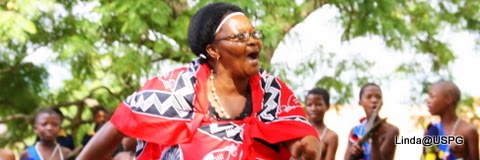One of the people who know first-hand the history of big game parks in Swaziland is Ted Reilly, the MD of Big Game Parks in Swaziland. I spoke to him on the veranda of the house in which he grew up, which is now called Reilly’s Rock in the Mlilwane Game Reserve. Ted’s father, Mickey turned the family farm into the first game reserve in Swaziland and the family have since established another three parks. Ted told me that his father came to Swaziland with the British troops for the Anglo Boer War. He was member of the Steinacker’s Horse and was with them when they took Bremmersdorp (now Manzini) from the Boers. After the war he decided to stay on and lived at Mlilwane where he started mining tin. When WW1 broke out he was not allowed to join because his mining was considered essential to the war effort. His contribution was to build a RAF base on a ridge near Mlilwane where Spitfires and Hurricanes regularly took off and landed. Mickey told his son how it took them 3 to 4 days on horseback to travel to Johannesburg. With the arrival of cars that trip could take up to 10 days depending on how long they had to wait for swollen rivers before a safe crossing. There were also numerous concertina gates to be opened and closed on this trip. Mickey Reilly also brought the first electricity to Swaziland. It was generated by a 52,5KVA alternating hydro power plant for the purpose of separating tin from iron at his tin mine.
Reilly’s Rock in the Mlilwane Game Reserve
A man named Moolman in 1919 built the house in which Ted grew up and it took him several years to build it. Moolman offered to build the house in exchange for an ox wagon, which cost about 80 pounds in those days. That house and interior has changed very little in the last 50 years. It is an original “Out of Africa” house and has offered hospitality to many well-known personalities in the conservation arena. People like Prince Bernard, Dr. Ian Player, Dr Anton Rupert to name but a few. (When you visit Mlilwane this house is available for accommodation and not too expensive if you are paying in sterling/euro.)
“We had to shoot the patient…”
Ted Reilly has many tales to tell about his experiences with the wild life in Swaziland. He was brought up among wild animals and as an adult he returned to Mlilwane to help establish the games reserves. One can imagine that Ted Reilly and his staff had a lot to learn and they did most of by trial and error.
One of Ted’s stories that I just love to repeat is about a kudu that had a broken leg. In those early years a kudu was a precious animal. Ted says that against his better judgement but spurred on by a friend, a newly qualified surgeon Dr. John Fleming they decided to catch the kudu and amputate his leg. They caught the kudu but the doctor did not have the right equipment for the operation so they drove to the Mbabane hospital. Ted says: “We arrived there in the early hours of the morning and knocked up the night nurse, who, when she saw the roughest looking group of dirty unshaven guys clad in greatcoats stained with kudu blood, nearly had a fit. John Doctor – as we called him- took over, he was very authoritative and introduced himself as a doctor with a crisis on his hands. He explained he had a patient who needed an emergency operation and asked to be shown the instrument cupboard. The confused nurse did not argue and John chose his instruments, with a promise of a quick return the group marched out leaving a bewildered nurse gaping in the doorway. We left the vehicle with the kudu a little way off because there was doubt that the hospital staff would facilitate an operation on an animal with their instruments.” The amputation was done but the kudu had lost too much blood and it had weakened and they all realised it was a futile attempt and that the kindest thing would be to end the kudu’s suffering with a bullet through the brain. “The cocks were crowing their 4 o’clock signals when we returned the instruments to the hospital. John handed them over to the nurse with firm instructions to sterilise them properly. The nurse then hesitantly asked about the patient and John replied sadly” It did not work out, I’m afraid she was too far gone so we had to shoot her.” The nurse showed signs of fainting and John helped her to a chair where we left her in a state of shock.”

.JPG)
.JPG)
.JPG)

.JPG)
.JPG)
.JPG)
